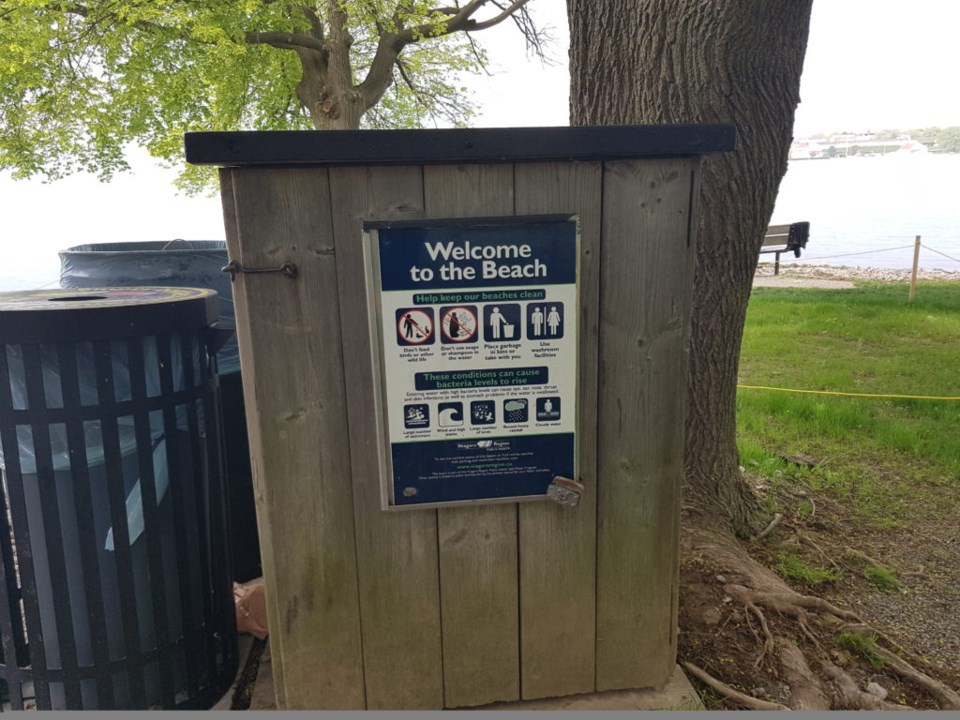
“Water is the ultimate life force.”
These were the words of environmentalist Owen Bjorgan, who wrote a column for this week’s Local about water safety.
He is talking about recreational activities on the water, but it seems this is the time in NOTL to focus on water safety for many reasons. The town is dealing with preparation for flooding, a real fear of waterfront residents; there are issues with sewer problems and E. coli entering the lake, river and creeks, and shoreline protection, an ongoing issue for several years, has taken on a sense of urgency.
One way or another, they are all connected, and can cause safety issues for residents and visitors. And we all want to know what’s being done to keep everyone safe.
Last week, The Local reported that Queen’s Royal Beach had not been posted as unsafe for swimming in 2018.
That was incorrect. It was posted 14 times.
There seems to be some lack of communication between the Town and the Region, says Town CAO Holly Dowd, although she was quick to take responsibility for being mistaken in the information she provided The Local, which was clarified by the Region this week.
Although it’s not the Town’s responsibility for taking water samplings, it has taken on that job. The Region then does the testing, the Region posts online whether beaches are safe for swimming, and Town staff physically flip the sign at the beach to inform those who might be planning on swimming, we learned this week.
The parks and recreation department looks after posting, and if the weather is safe, you will see a sign on a wooden garbage container that shows the various kind of litter, and under that, the reasons why the water might not be safe. It doesn't say it's unsafe — it says to check the regional website for more information.
But if the water is not safe, that sign gets flipped and it clearly indicates the bacteria level makes it unsafe for swimming. Sampling began Monday, and by Thursday the water was still considered safe, although there were eight beaches out of 23 across the region that were not.
Dowd said she didn’t receive any information that the beach was unsafe in 2018, but other staff members did and carried out their duty to inform the public.
One bit of bad news in all of this is that Town staff are once again struggling due to lack of communication, both internally and with the Region. Neither issue is new.
The good news is that staff did what was necessary, and residents and visitors to town had the information they needed last summer, and should again this summer, to make a decision about swimming in the water at Queen’s Royal Beach.
It seems the current arrangement between the Town and Region may be temporary. It works for now, but the Region’s limited resources could mean the NOTL beach may not be tested at all next summer. That, however, is a problem for 2020. There are more immediate issues on which to focus.
Thankfully, it seems Town staff are trying to overcome the tendency toward lack of communication that keeps getting them in trouble with residents, that feeds the perception, real or otherwise, that information is being withheld, and secrets kept. We say if Town staff are able to acknowledge this shortcoming and fix it, better late than never.
At the beginning of this week, a decision was made to hold a public meeting for Dock Area residents, to bring them up-to-date with the high lake level and what is being done to mitigate the impact, and also to rectify the problems being caused by not communicating with residents earlier. It’s an ongoing concern for those who live along the waterfront, and not having correct and current information has exasperated what is already a frightening and serious problem. The concern that Town staff were not properly handling what was before them, that they didn’t have the skills or knowledge to do so, was not inspiring confidence in those who fear for the safety of their homes.
The meeting is Friday, at 1:30 p.m. at the community centre. By the end of the day Wednesday, Dock Area residents should have received a notice of the meeting in their mail boxes.
Brett Ruck, the Town’s environmental supervisor, is inspiring confidence in Dock Area residents and in Ron Simkus, a retired mining engineer, who has offered his advice and detailed data to help with flood protection. Ruck will be at the meeting, and safe to assume Simkus will as well.
Although the two issues, water quality and flooding impacts, may seem to be unrelated issues, and are being handled separately as such, at one level — that is, the rising lake level — they are not unrelated.
Rising water puts pressure on the Town’s aging sewer system, cross-contamination causes sewage to enter the lake through storm water outlets, and the beach becomes unsafe.
Town staff must be sure they have the information and knowledge required to move forward, whether it’s from within or with help from consultants or experienced volunteers, and must act on it. And they must effectively and in a timely fashion communicate they are doing so to residents.


